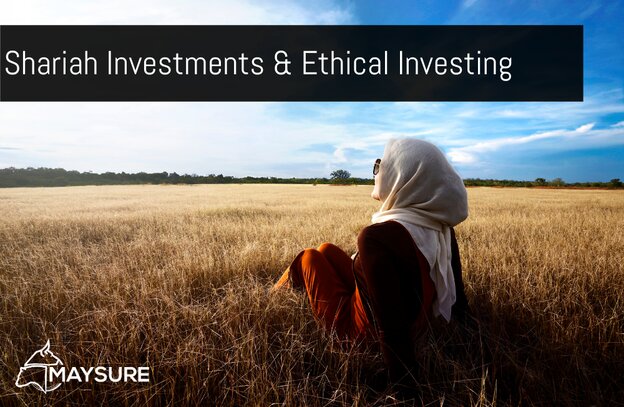Tax-Free Investments in South Africa – Your Guide to Tax-Free Savings Accounts
Tax-Free Investments – commonly known as Tax-Free Savings Accounts (TFSAs) – have become one of the most popular ways for South Africans to save and invest without the drag of taxes. Introduced in 2015 as part of a government initiative to encourage household savings, these accounts offer a simple yet powerful opportunity: all growth earned is completely tax-free. In this article, we explain what tax-free investments are, how they work under current 2025 regulations, and how you can use them to your advantage. We’ll also dispel some myths – like the idea that you need a lot of money to start – and share expert insights from Maysure’s own financial advisor, Zaheer Talia, on why tax-free investing is a game-changer for your financial plan.
What is a Tax-Free Investment Account?
A tax-free investment account is a special type of savings or investment account where your returns aren’t taxed at all. Unlike a normal bank account or investment, a TFSA allows you to earn interest, dividends, and capital gains without paying any tax on them. This means every rand of growth stays in your pocket. The National Treasury introduced these accounts in South Africa in 2015 to improve the nation’s savings rate, and they remain a cornerstone of personal finance policy in 2025.
How it works: You contribute money (after-tax income) into approved tax-free savings vehicles – which can range from bank accounts and fixed deposits to unit trusts and JSE-listed ETFs. The government sets limits on how much you can put in (to keep the system fair and sustainable), but any returns your investment earns are completely tax-free for life. You won’t pay a cent of tax on interest earned, dividends received, or any profit when you sell investments in the account. By eliminating taxes on growth, TFSAs let your money compound faster than it would in a taxable account, effectively boosting your long-term returns.
Contribution Limits and Tax Benefits
Tax-free investments come with annual and lifetime contribution limits set by law. As of the 2024/2025 tax year, you can contribute up to R36,000 per year (per tax year, which runs March to February), and a total of R500,000 over your lifetime. These limits have remained unchanged since 2020 (when the annual cap was raised from earlier years). It’s important to stay within these allowances – any contributions above the limit will incur a hefty penalty tax from SARS. Specifically, excess contributions are taxed at 40% of the amount over the limit. For example, if you were to contribute R10,000 beyond the yearly cap, you’d owe 40% of R10,000 (i.e. R4,000) as a penalty. Fortunately, there’s no penalty for contributing less than the limit in a year (you just don’t get to carry over unused room – each year’s R36,000 is a “use it or lose it” allowance).
Tax benefits: The key attraction of a TFSA is that all investment growth is tax-free. Under normal circumstances, South Africans pay taxes on interest (beyond a small exemption), on dividends (20% withholding tax), and on capital gains (effective 18% for individuals) – but within a TFSA, none of these apply. For instance, if your TFSA holds shares that pay dividends, those dividends go straight into your account without the usual 20% cut to SARS. If you earn interest or sell an investment at a profit, you pay no income tax or capital gains tax on those earnings. This total tax exemption means your investment can compound unhindered. Over many years, this benefit can translate into significantly higher balances. (One estimate showed that a full TFSA allowance – about R369,000 invested over time – could grow to roughly R1.18 million in 10 years, thanks to compounding free of tax.)
Flexibility of investments: You don’t have to contribute in one go or every year. You could invest a lump sum or make monthly deposits, as long as you don’t exceed R36,000 in a year. The TFSA rules allow you to invest according to your means – whether that’s R3,000 a month or R300 a month. There’s also no restriction on the type of approved investment you choose: you might opt for a safe cash deposit or a high-growth equity fund (or a mix), depending on your goals. Any growth is sheltered from tax either way. (Just note: if you choose a fixed-term product like a 1-year deposit, you might face a small bank charge – usually no more than R500 – for early withdrawal. Otherwise, there are generally no fees for accessing your money.)

Beyond the Basics: Lesser-Known Facts and Common Misconceptions
Tax-free investments are straightforward, but there are some nuances and myths worth clearing up. Below are a few key facts to remember:
- You don’t need big money to benefit. A common misconception is that investing only “pays off” if you have large sums. In reality, small, regular contributions can go a long way. Consistency is more important than size. Even putting away R500 a month (well within the limits) into a TFSA can grow into a substantial nest egg over time, thanks to compound interest and tax-free growth. “You don’t need a big lump sum to benefit from a Tax-Free Savings Account—small, regular contributions can go a long way,” as Zaheer Talia often reminds investors. It’s about how often and how long you stay invested, not just how much you invest at once. The key is to start and keep at it; every bit adds up when invested wisely.
- It’s never too early or too late to start. Another myth is that tax-free accounts are only for a certain age or stage of life. In truth, any South African, at any age, can have a TFSA. Parents can even open one on behalf of a minor child (the account will be in the child’s name, using the child’s own annual/lifetime limits). This means you can start investing for your children from day one – giving them a head start on decades of growth. On the other end of the spectrum, it’s also never too late to use this benefit. Even if you’re nearing retirement, you can invest (or continue investing) in a TFSA to shelter growth on your savings. In fact, financial data shows that in recent years senior citizens have been increasingly opening TFSAs to boost their savingsdailyinvestor.comdailyinvestor.com. Whether you’re 18 or 68, the tax-free compounding over the remaining years can significantly enhance your wealth. The bottom line: starting early is ideal, but starting later is better than not starting at all.
- Easy access to your money – with one catch. Unlike retirement annuities or pension funds, tax-free investments are not “locked in.” You can withdraw your money whenever you want, for any reason – no questions asked and no tax or penalty for doing so. This flexibility means a TFSA can double as an emergency fund if needed, giving you quick access to cash without forfeiting any tax benefits (some even call it a “rainy day fund” for this reason). The catch: when you withdraw, that used contribution space is gone forever. Any amount you take out cannot be replaced or added back on top of your limits. For example, if over several years you contributed R100,000 and then withdrew R20,000, your remaining lifetime contribution room isn’t still R400,000 – it would drop to R380,000 (because the R20k withdrawal counts against the R500k lifetime cap). So, while you can access your money at any time without a SARS penalty, every withdrawal effectively reduces your tax-free investment capacity. It’s wise to withdraw only if truly necessary, so you preserve as much tax-free room as possible for the future. (In short: accessible, but ideally left untouched to maximise growth.)
- No penalties unless you over-contribute. Aside from the contribution limits, TFSAs are very forgiving. There’s no penalty for skipping contributions in a given year, and as mentioned, no direct penalty for withdrawing funds. The only time you’ll face a penalty is if you exceed the allowed contribution limits. SARS will levy a 40% tax on any amount contributed over the R36,000 annual limit or beyond your R500,000 lifetime limit. This rule is simply to prevent abuse of the system. As long as you stay within the limits, you won’t incur any special taxes. It’s a good practice to keep track if you have multiple TFSAs – ensure that together your accounts don’t receive more than R36k in a tax year. With a bit of diligence, it’s easy to avoid any penalties and enjoy all the benefits.
- You can transfer your TFSA between providers. Some people hesitate to open a tax-free account because they’re not sure which bank or investment platform to choose, fearing they’ll be “stuck” if they change their mind. The truth is, tax-free investments are transferable. Since 2018, regulations allow you to move your TFSA from one provider to another without losing your tax-free status or counting it as a withdrawal. The important caveat is that it must be done as a direct transfer – you request your current provider to transfer the funds to the new provider. You cannot withdraw the money yourself and then reinvest it in a new account, because that would count as a new contribution (potentially putting you over the annual limit). All major institutions have processes in place to facilitate TFSA transfers. So, you’re free to shop around for better interest rates, lower fees, or a platform with investment options that suit you, even after you’ve started investing. Tax-free accounts are meant to be flexible and competitive – you’re never locked into one company.

How Tax-Free Investing Fits Into Your Financial Plan
Tax-free investments should not be viewed in isolation – they are an integral part of a balanced financial strategy. Because of their unique benefits, TFSAs can play multiple roles in your broader plan:
- Long-term wealth building: TFSAs are ideal for long-term goals like retirement savings or funding a child’s education, as noted by experts. The longer you leave money invested in a TFSA, the more powerful the compounding becomes, since none of your growth is being eroded by taxes. Over 10, 20, or 30 years, a maxed-out TFSA can grow into a significant nest egg. For example, many people use tax-free accounts to supplement their retirement – by the time you retire, you could have a sizeable tax-free portfolio to draw from in addition to any pension or provident fund. (And unlike those retirement funds, the TFSA money can be accessed in full at any time, providing extra flexibility.) Tip: If you have the means, try to contribute the maximum each year – it “resets” every March and any unused portion won’t carry over. Making full use of this allowance each year ensures you’re not leaving any tax benefit on the table.
- Medium-term savings for big goals: Because you can withdraw without hassle, a TFSA can be a great vehicle to save for medium-term goals – such as a deposit for a house, a new car, or your children’s university fees. If you know you’d like to use the money in, say, 5–10 years, you can invest in slightly growth-oriented options within your TFSA and let the money grow tax-free until you need it. When the time comes, you withdraw the amount for the goal (tax-free) and you won’t pay any tax on the investment gains that helped you reach that goal. Just remember that once withdrawn, you can’t put that amount back in; but if the goal is achieved, that’s a trade-off you’ve planned for. Using a TFSA for these goals means more of your savings actually goes toward the goal and not to the taxman.
- Emergency fund with benefits: We all need an emergency fund for life’s unforeseen events. Typically an emergency fund sits in a savings account – but you could also keep it in a tax-free investment account to earn better returns. Many South Africans treat their TFSA as a “rainy day fund”, since it offers relatively quick access to your money if something urgent occurs, without any tax consequences on withdrawal. If you choose a stable investment (like a money market fund or income fund) inside your TFSA, the value shouldn’t fluctuate dramatically, and it can serve as a reliable emergency reserve. Meanwhile, any interest it earns is tax-free, boosting the efficiency of your safety net. (Just be cautious: if you withdraw for an emergency, you lose that contribution room. But in a true emergency, the priority is having the funds available – and a TFSA provides that peace of mind with an added growth bonus.)
- Tax diversification and estate planning: Incorporating tax-free investments also gives you tax diversification in your financial plan. Alongside taxable investments and tax-deferred retirement products, a TFSA provides a pool of money that you can tap entirely tax-free in the future. This can be very useful, for instance, in retirement: you might draw a certain amount from your taxable retirement annuity (which is then taxed as income) but supplement it with tax-free withdrawals from your TFSA to stay in a lower tax bracket overall. Additionally, TFSAs can have estate planning benefits – while the account balance becomes part of your estate if you pass away, all the growth that occurred inside wasn’t taxed along the way, potentially reducing the overall tax impact. You effectively get to pass on more to your heirs than if those investments had been in a taxable account (where capital gains tax and interest tax could have reduced their value). It’s a subtle perk, but for those looking to leave a legacy, every bit of tax saved means more for your loved ones.
In short, tax-free investments are a versatile tool. They can coexist alongside retirement annuities, unit trusts, and other investment vehicles in your portfolio. In fact, financial planners often advise funding your TFSA each year as a first priority (after covering essentials and any employer-matched retirement funds), because of the unparalleled tax advantage. As Standard Bank’s Head of Savings and Investments puts it: “For anyone looking to build financial resilience or grow wealth over time, TFSAs remain one of the most effective investment vehicles available.” By using your TFSA allowance wisely, you’re boosting the overall tax-efficiency and growth potential of your financial plan.
Expert Insight: Zaheer Talia on the Long-Term Value of Going Tax-Free
Zaheer Talia, CFP® FPSA®, is a seasoned financial advisor at Maysure Financial Services with over 15 years of experience in helping clients achieve their financial goals. As a Certified Financial Planner (CFP) and Professional Fiduciary (FPSA), Zaheer has a deep understanding of how different financial tools – including tax-free investments – fit into a holistic strategy. He emphasises that tax-free investing is one of the “low-hanging fruits” that every South African should consider.
According to Talia, many people underestimate the impact that compounding, free of tax, can have on their wealth. “It’s not about timing the market; it’s about time in the market,” he notes. “Whether you start with R500 or R5,000, the important thing is to start early and stay consistent. The longer your money grows without taxes nibbling at it, the more powerful the outcome. I’ve seen clients turn modest monthly contributions into substantial portfolios over the years by maximising their tax-free accounts.” Zaheer also stresses that tax-free investments bring flexibility and should be tailored to individual needs. If a young professional, a middle-aged parent, and a retiree all open TFSAs, they might use them differently – and that’s the beauty of it. “It’s never too early or too late to use a TFSA as part of your plan. The product adapts to you – it can be aggressive or conservative, short-term or long-term, depending on your goal. My role is to ensure clients integrate it properly: for instance, balancing it with retirement products, or using it to build an education fund for their kids, etc.” With his extensive expertise, Zaheer Talia has helped countless clients harness the long-term value of tax-free investing as a cornerstone of their financial success. He and the Maysure team stay up-to-date on regulations to ensure clients remain fully compliant while reaping the maximum benefit.
Credentials: Zaheer Talia holds the CFP® designation, indicating that he meets stringent education, ethics, and experience standards in financial planning. He is also an FPSA® professional fiduciary, meaning he’s qualified in estate planning and trust administration – a valuable combination when advising on investment and legacy planning. Under his guidance, Maysure has been empowering clients to use vehicles like TFSAs effectively since the firm’s inception in 2003.
Take Action: Start Your Tax-Free Investment Journey Today
Tax-free investments in South Africa offer a rare and rewarding opportunity to grow your money without tax constraints. By understanding how to use TFSAs – and by avoiding common pitfalls – you can significantly enhance your long-term financial wellbeing. It’s a straightforward concept backed by prudent rules and generous benefits for those who take advantage.
Now it’s your turn to act. If you want to make the most of tax-free investments as part of your financial strategy, Maysure Financial Services is here to guide you. Our team of experts (including Zaheer Talia, CFP®) can help you craft a plan that leverages all available benefits while aligning with your personal goals. Don’t leave money on the table. Contact Maysure Financial Services today to book a consultation and let us help you secure your financial future – tax-free!







































